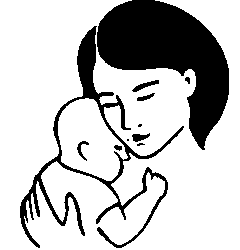When should I switch my baby to baby food? This question marks an exciting milestone in your little one’s journey. As a parent, you’re likely eager to introduce your baby to the colourful world of solid foods, but timing is crucial.
Generally, most babies are ready to start solid foods around six months. However, every child is unique, and readiness can vary. Look for signs like reasonable head control, sitting up with support, and showing interest in your food.

This article will explore the ins and outs of transitioning to baby food. From recognizing readiness signs to choosing first foods, we’ll guide you through this exciting new phase of your baby’s development.
When should I switch my baby to baby food?
Transitioning your baby from breast milk or formula to solid foods is an essential milestone in their development.
Most paediatricians recommend introducing baby food around six months, though some babies may be ready earlier or later.
Look for signs of readiness, such as reasonable head control, sitting up with minimal support, and showing interest in food.
Start with single-ingredient purees, like rice cereal mixed with breast milk or formula, and gradually introduce fruits and vegetables.
Offer new foods one at a time, waiting a few days between each new item to watch for any allergic reactions.
Remember that every baby develops at their own pace, so consult your paediatrician for personalized advice based on your child’s growth and development.
As you begin this exciting new phase, be patient and allow your baby to explore new tastes and textures at their comfort level.
Age recommendations:
While every baby develops at their own pace, paediatricians generally recommend a timeline for introducing solid foods. Here’s a general guide to help you navigate this exciting journey:
- 4-6 months: This is typically the earliest age to consider introducing solids. Look for signs of readiness, such as reasonable head control and interest in food.
- Six months: The World Health Organization (WHO) recommends starting complementary foods at six months while continuing breastfeeding or formula feeding.
- 6-8 months: Focus on introducing single-ingredient purees and soft, mashed foods.
- 8-10 months: Begin offering finely chopped foods and encourage self-feeding with soft finger foods.
- 10-12 months: Transition to more table foods and resume introducing various textures and flavours.
Here’s a chart summarizing the progression:
| Age | Food Texture | Examples |
|---|---|---|
| 4-6 months | Thin purees | Single-grain cereals, pureed fruits/vegetables |
| 6-8 months | Smooth purees | Mashed banana, avocado, sweet potato |
| 8-10 months | Soft, finely chopped | Soft fruits, well-cooked vegetables, ground meats |
| 10-12 months | Table foods | Small pieces of soft foods eaten by the family |
Conclusion
Transitioning your baby to solid foods is an exciting milestone, but it’s essential to approach it with patience and care.
The ideal time to introduce baby food is typically around six months, though this can vary based on your child’s development.
Watch for signs of readiness, such as reasonable head control and interest in food. Start with simple, single-ingredient purees and gradually expand your baby’s palate.
Remember, every child is unique, so don’t worry if your baby’s journey doesn’t match precisely with others.
Always consult your paediatrician for personalized advice and guidance. The transition to solid foods is not just about nutrition—it’s an opportunity for your baby to explore new tastes, textures, and experiences.
Enjoy this time as your little one embarks on their culinary adventure, knowing you’re laying the foundation for a lifetime of healthy eating habits.
